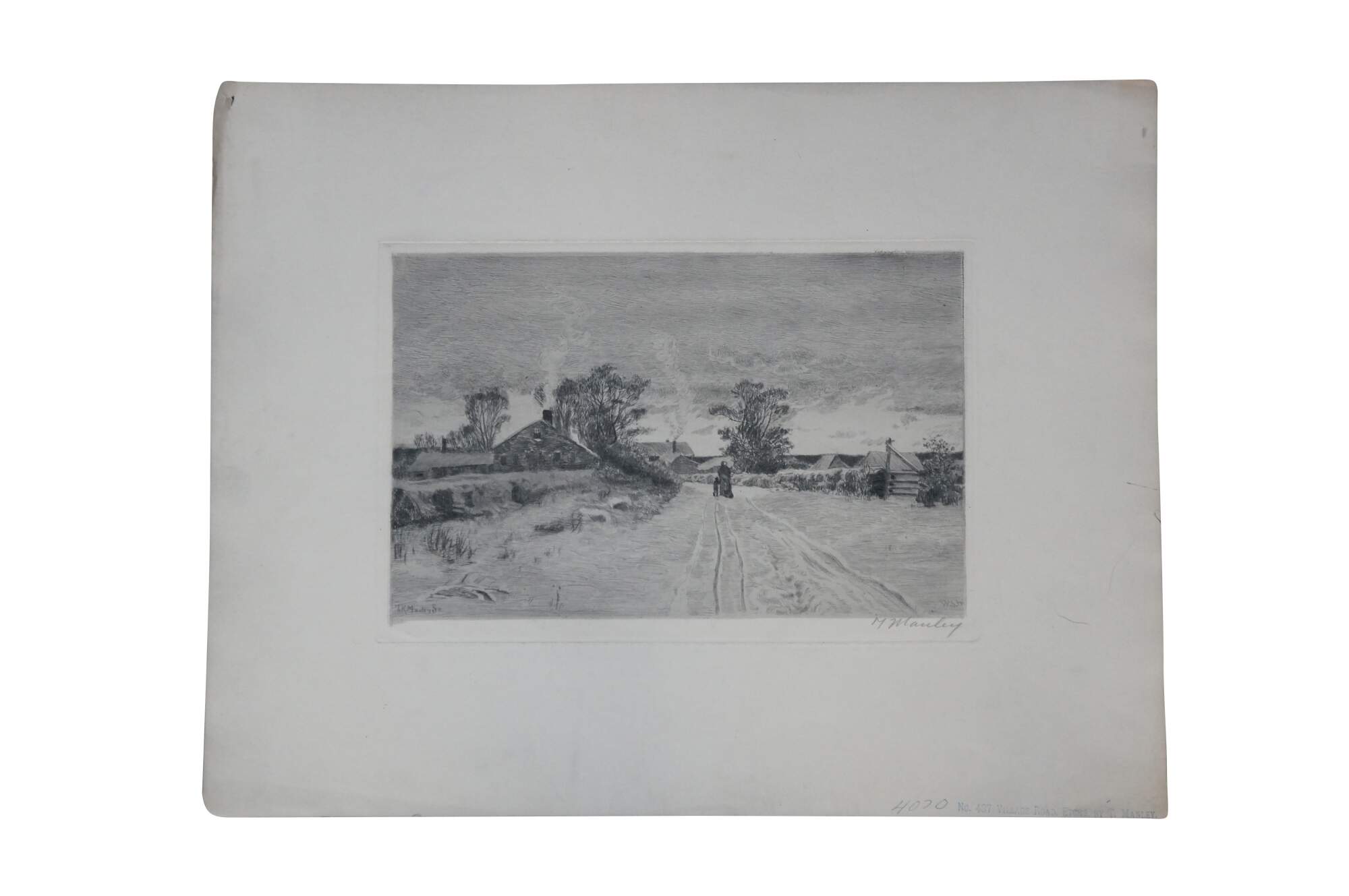
Shipping:
Free Shipping Included
Delivery:
Estimated 2-15 Business Days
Payments:
Credit Card, Check, Cash, PayPal, Apple Pay, Venmo
Returns:
30 Days 100% Money Back Guarantee, Buyer Pays Return Shipping
Description
Late 19th century black and white etching titled "Village Road" by Thomas Manley. Winter landscape of a pair of figures walking down a road into a village. Signed in plate. Pencil signed, lower right. No. 437. Paper; unframed.
"THOMAS RATHBONE MANLEY (1853 - 1938): AMERICAN IMPRESSIONIST - Born in Buffalo, New York, Thomas Rathbone Manley was the son of Dean Swift Manley and Elizabeth Rathbone Manley. He moved to Richland Springs, New York in 1856 and spent most of his youth there. He married Evelyn Burr of New York in 1877. In 1893 he moved to Montclair, New Jersey with his two daughters. He was about twenty years old when one day in the woods near his home, Manley came across an artist using water colors. Inspired by this, he sent to New York for a box of water colors and began in earnest his life's work. When asked if his first attempts were good enough to inspire him to go on, he replied, "I don't know that that had anything to do with it. I was interested and kept on because of that." Aside from three months study at the Pennsylvania Academy of The Fine Arts under Thomas Eakins, he had no formal training. At some time or other in his long career, he took up various branches of art expression: charcoal and pencil drawing, etching, miniature painting, water colors, tempera and oil. He spent much time and effort on each of these media, making himself a master of each before he went on to another interest. He always said that his favorite medium was the one which at the moment was able to express most quickly and strongly what he wanted to say in his work. When, with his young family he moved to Montclair, New Jersey, he found himself in a most congenial atmosphere. Among such established painters as George Inness, Ballard Williams, Charles Warren Eaton, Walter and Emily Greenough, and Frederick Waugh, the woods and hills of this farming country gave him the subjects he loved to draw and paint, only a bicycle ride away. Later after acquiring a Model T Ford he could range far-a-field. His method was to paint 'thumb-nail' sketches putting down quickly his fresh impression of a scene and from this he would paint his larger pictures. He had a photographic memory and could evoke with the aid of his little sketches the reality of the scene and its special atmosphere. The media in which he worked always challenged him to innovative changes of methods. The result being peculiarly his own. He ground and mixed the color of his oils and temperas to insure their purity and permanence. His experience with etching led to a style of his own called "grain etching." For a number of years he painted murals using thin oil on linen. A set of murals was purchased by The Yale Club in New York for their Grille Room. Among other owners were J.D. Rockefeller,Jr. who had a Manley mural over the mantel in his home. Manley was a member of the National Arts Club in New York and served as Vice-President of the American Society of Miniature Painters. He was also a member of the Water Color Society and one of the founding members of the Montclair Art Museum in Montclair, New Jersey. Manley was often called in his own time "The Dean of Montclair Artists". He was awarded the bronze medal for etchings, St. Louis Expedition, 1904" (askART)
Condition
Good Overall - Gentle wear; some stains; discoloration
Dimensions
18" x 14" (Width x Height)